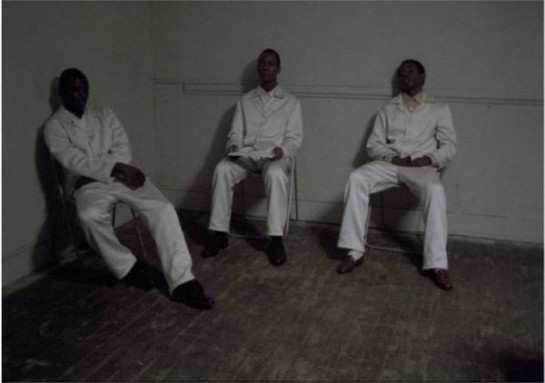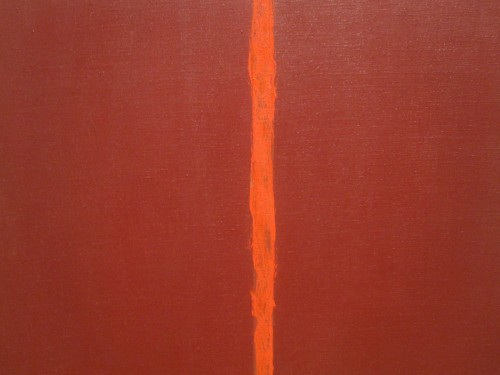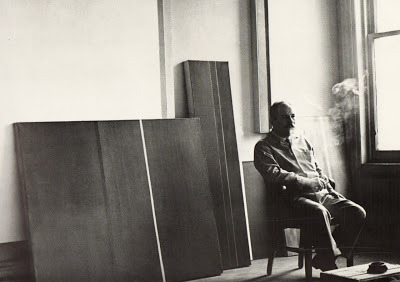
This week I had a number of strange exchanges on facebook and other media sites. All of them with people I have never met in person. Now, this was on the heels of my discussion with Guy Zimmerman last week on formula writing and narrative. It was also the week Bradley Manning was convicted.
My feeling though had to do with the sense of how twitter and facebook, and other social media platforms, are shaping not just discourse, but also how the culture is coming to view ideas such as friendship and intimacy, and perhaps most of all, privacy.

There are also several other items that I feel were sort of related to this. I had a walk around the Trondheim Museum of Art this week. There was a terrific exhibit of furniture and household design in the basement. A good deal of very interesting Art Nouveau work; chairs, wardrobes and ceramics. Then as I turned the corner, there was Marcel Breuer’s *Wassily* chair, designed at the Bauhaus. What struck me, was that Breur’s chair remains stunningly original, and more, that it seems to have anticipated future criticisms. Just a few feet away is a Gerrit Ritveld chair. It remains a very cool design, and yet, it could easily be an Ikea chair. There is something paradoxical in this, already. Why did Breur seem significant, and Ritveld minor? What is it that seperates them?

The *Wassily* Chair, Marcel Breuer
Now, I can well imagine getting arguments about this. The Rietveld chair is a highly influential and terrific design, and in fact was designed with the hope of mass production, as was the Breuer chair. Furniture design is a fascinating topic, and one with a somewhat fluid criteria for excellence, especially work designed for mass production.

Red and Blue Chair, Gerrit Rietveld
However, I think in the end, standing in the basement of the museum, I was aware of something very basic in the Breuer design and it links to this idea of space in art. There is a space created by the Breuer chair. Part of it is anticipatory. By which I mean that as the chair is viewed, there are of course visual codes to be read. The *space*, though, is a product of associations, and emotions that are called forth, and in the case of all furniture, there is no doubt a host of psycho sexual sub-texts involved. The *Wassily* Chair is an X Ray of the Gentlemen’s Club Chair of the late 1800s. It is in a sense the outline of that heavy stuffed leather arm chair of elite private men’s clubs, but with everything removed. The arms seem to float. The back strap seems to hover as well, and yet, the ghost of the club chair remains. And it is this sense of something gone, vanished, which gives the chair a quality of uncommoness. The B3 chair (its proper name) is also not ‘too’ inviting. It is not obsequious.
Now the Rietveld chair operates on a much simplier level I think. The DeStijl school (Mondrian,Theo Von Doesburg, et al) believed in primary colors. One could use grey and black as well, but the signs were expressed via color. Rietveld’s joint became a sort of cultic design element…of which he said:
“The ordinary doweled joint, by which the post takes the rail, is still used for nearly everything. It is a very satisfying method of working and it is a fine thing to see, for example a set of rails and posts with hole, peg and groove. Once the piece of furniture has been put together, however, no more is to be seen of this often very expensive jointing. This jointing sometimes gives rise to an unintentional plain surface. It is understandable that people should wish to emphasize this constructional achieved form still more with decoration. The jointing employed here was an obvious choice because of its simplicity and clarity of expression”
The Rietveld chair suggests something both Japanese, and modernist. It’s clarity is pronounced, but somehow, when I see the chair today, in person especially, the colors seem self conscious. The attempt to create an endless beam of wood by cauterizing its cut end with a primary color (yellow) somehow feels defeated, today. The anticipatory space drains away. There is no ghost encounter.

Now, I have good friends that I have never met. They are electronic friends. I suspect this is, on the one hand, nothing all that unusual. On the other hand, this is where I find something disturbing in texting, twitter, and facebook. For if this generation has already accepted the loss of privacy, then its useful to think about what has been given up along with that, and in what way does that connect to forms of written expression that are so truncated. Facebook houses its comments in little boxes. They resemble cells. There is an element of aggression to all confinement. The form also feels like a medium in which communication is rushed. It is hurried. If the eye cannot see because of the pressure of anticipation (as I wrote a while back), then I suspect that when forced to resort to text, these disembodied forms must *write* messages…or *comments*, with emoticons and endless abbreviations, that accompanying this is a barely surpressed frustration. It is maybe the invitation to frustration that partly fuels these sites. Some people are going to say, no, this is a good social tool, and I agree, there are certainly aspects of facebook that are open to organizing and can be hugely useful at the community level. But the vast majority of usage is driven by something angry. It is perhaps a very almost metaphysical anger.
I wrote before about the attention economy. And its a topic I feel needs to written about more. The extraction of value from those using social media….by virtue OF their using those platforms. Commodifying attention in a sense. But I want to look at this from an aesthetic angle now. The erosion of personal privacy has far reaching implications.
Social media always encourages a performance. There is an implied audience. There is wedded to this ‘impulse expression’ an acting out. The audience fosters a performative acting out of personal drama. Its almost a mass group therapy, but without the analyst. The audience is just a sort of phantom presence. People re-narrate their lives on facebook. They present an image of themselves, and yet this presentation is treated as no more truthful than a TV show. Social media as reality TV. Screen existence. And it’s all coupled to this rushed hurried impulse to ‘be-your-opinion’. Own your opinion. And usually, in the most binary form possible. Like or not like. Comment. If one goes to sports pages, for example, and reads the comment threads, what one almost consistently finds is aggression and a sort of bragging expression of contempt for whoever wrote the column, or contempt for others who have commented. And usually this is done under a pseudonym. A ‘screen name’. But driving it is anger.
And I suspect I am right when I suggest this is largely a white phenomenon.
There is this sense of abbreviated narrative, of just incoherent unformed thoughts, fragmented opinions, and attitude. There are exceptions, and one does certainly meet many people one might not otherwise ever meet. And it’s often global. Still, the prevailing emotional atmosphere is one of impatience and an elevation of trivial impulsive transitory thoughts. I see this in a lot of fiction today. The rise of graducate writing programs has created an entire new class of hobbyist writer. The literature of the quasi professional, the dilattante. This seems to include a quality of inexact observation. I think what is now being elevated in Academic MFA programs is largely what was once just a personal diary, except less honest. And this leads back to questions of realism or naturalism. The counter posture to realism is the ‘childish imagination’. The reductive fantasies of an infantile culture. It is also, an era of essentialist thinking for the general public. Identity politics is one branch of this. I intend to return at some point to what I find highly problematic about all identity politics, but its a huge topic and I had hoped to stay on message a bit more today. The short version is, identity is a social construct. A myth. So the political response based on identity is a reaction to forces of oppression. Otherwise, likely, there is no reason for it. But today, these social fictions are increasingly being treated as apriori factual (not to imply the oppression has gone away because it hasn’t). Specialization in all fields means that private jargon is targeting those with similar tastes and interests. So there are these spasms of thought, impatient and aggressive, coupled to a lot of reflexive irony and sarcasm, as well as an intellectual tunnel vision that validates private ownership. Privitized culture.

I was thinking this week also, of an article I posted in the comments of my previous posting, by Shana Beth Mason, on the work of Jane and Louise Wilson.
The architecture of entrapment. Their work has tended toward looking at the disciplinary buildings of various state agencies (East German state police for example). It is the space of control. Of state control. They have also created pieces about Pripyat, the site of the Chernobyl meltdown. It is this sense of contained space, of paranoia and angst. And of fear. Today’s increasing surveillance state in the US and UK directly relates, for it is the legacy of the Panopticon, and of all borders and limits. The above painting is by Barnett Newman. I think as time passes, Newman’s work grows in stature. For it is the work of releasing space. The Wilson’s work presents the totalitarian impulse. Newman’s the unmediated questioning of experience. To discuss work like Newman’s is often very difficult because the degrading of language. I’ve heard it called a search for the sublime, or as heroic or spiritual. All of this is just cliche. Still, the scale and color, the feeling of a destruction of the reductive binary logic of authoritarian socities is given in an architectural sensibility. This is another space. It is a direct entrance to the ghost in the Breuer chair. If there is a morbidity to what the Wilson’s present, there is only grandeur to Newman. The morbidity though is also the neural pathway to our own trauma. The unconscious, or pre-conscious feels the punishing mortality of Stasi city, of Pripyat, with its relics of a rushed hurried desperate flight. The space of domination. I think the work of painters like Newman (and artists like the Wilsons in another way), feels alien to the comment box sensibility of facebook. There are no UV filters, or iPhone devices, only the primordial screen. The indifference to knowledge about our “friends” on facebook, or twitter is devoured by something much larger in the mystical indifference of Newman’s work. It is true in Rothko, too, in a sense. But Rothko was meditative in a way Newman is not. Newman is cabalistic, and the space feels empty in same way much Islamic architecture does, or the temples of ancient Egypt. This is the space of theatre. It is the empty stage that does not exist until an audience’s focused attention is brought to it.

I suspect that the loss of the tragic connects to the trivializing of experience endured under instrumental logic, under Capital. The surveillance state has robbed this generation of even the idea of privacy. We live now in the happy face version of Stasi city. But beneath that happy face, or perhaps alongside it, is the impatient acting out of a denuded sense of place. One can feel there is a near hysteria that wafts off the snarky comments or blurted out trivia. How does someone come to post comments about the sandwhich they just made? Or of noise from the building site across the street? Is it to reassure those posting that they are still there? There is a fear of the undefined in almost every Hollywood formula script. “Motivation” must be established. But motivation is psychological, and even at the same moment there is a denial of the psychological.
The tragic, said Kott, had become the grotesque. One’s experience of the grosteque can be paired down, ultimately, to the place where allegory begins. For it is akin to ruins. The ruins of the tragic, of the Gothic cathedral, or of Egyptian stelle. For those works, the imagination has submitted to the idea of emptiness. It is only with acute confidence that creations of emptiness can gain traction as we view them. The slightest hesitation and Barnett Newman would be only a housepainter, an amateur, a hack. For sometimes emptiness IS empty.
Newman said once that his paintings were just like meeting another person. Harold Rosenberg said, Newman’s obsession was to destroy and then transform the individual. I remember when I wrote the play Dogmouth, I had been playing around with the idea of characters I had read about in a newspaper story. Criminal hobos, ex Viet Nam vets dealing meth. But it was when I imagined the single railroad track disappearing into an upstage horizon that I was able to write it. There is a primal attachement to the drawing of a line. Newman’s zips are those lines that go somewhere, off stage. And off stage is usually the Id. It is where both violence and secret knowledge are found. The Obama regime is now openly policing society. A passive populace, largely, have forgotten to question authority. We are stopped by store cops, by real cops, and if we are told to do something, we do it. Of course we do. There are two million people in prison. Seven million total under custodial supervision. The population no longer thinks of drawing a line. One cannot tolerate an imagination when there is no privacy.

The loss of language is validated by baby gurgles, gibberish, from supposed thinkers (Zizek and his progeny), or by the stunningly inarticulate celebrities that come and go daily on major media outlets. Phrases now uttered that are so threadbare and worn that the ear doesn’t really pick them up. Quick, I have to post something about how I burned my english muffins this morning. Here is a quote from Zizek’s response to Chomsky’s criticism:
“So I claim that all these “how popular we are” is really a mask of… remember the large majority of academia are these gray either cognitivists or historians blah blah… and you don’t see them but they are the power. They are the power. On the other hand, why are they in power worried? Because you know… don’t exaggerate this leftist paranoia idea that ”we can all be recuperated” and so on and so on. No! I still quite naively believe in the efficiency of theoretical thinking. It’s not as simple as to recuperate everything in.”
This is the sound of a six year old in a back-yard play for his parents pretedning to be a philosopher.

I have said before that I think the best fictional prose today comes from a number of good genre writers. There are others not strictly genre, James Kelman, or until his death Sebald, or even Kem Nunn, who straddles all definitions. But I have a hard time imagining scope to equal the work of Bernhard or Broch, or even a Flannery O’Connor. In theatre Peter Brook is still alive, and Peter Handke, and Muller. There are individual works, and some directors, but in the main, the stage is filled with psychic bric a brac. I believe one of the missing elements is this sense of the work anticipating its own criticism, as well as the future of the form and medium. Beckett, by his later work, had intuited the imitations to come. So did Pinter. Minor artists wind down, and resort to intentionally minor work that serve prophylactically as a defense of their own loss of creative vision. Great writers question form, and recapitulate their own creative history as preparation for furthering their questions.
So, this drying up of the inner dreamscape of a culture is partly the violence of corporate intrusions, of corporate forms that shape, or rather prevent human encounters. On facebook there is only the imagined abstract audience. Where once handshakes and formal rituals of greetings helped navigate the uncertainty of human beings facing one another, today there are avatars adorning comment boxes. There are the rushed blurtings of twitter. The new glyphs of texting and emails. The narrative evaporates. Philosophy is expressed in the tones of spoiled children. And under all of it is a sense of violence. The west is now a playground or laboratory for violence. A vast state apparatus of spying, surveillance, and of punishment that premptively constricts the imagination, and even the daily gestural human body. People are disposible. That is the message and it is constant. If the new pseudo documenary Act of Killing can be greeted so enthusiastically, then there is a kind of mimetic dynamic with our authoritarian state fathers. Warmly displying the genocidaires of the Indonesian slaughter of 1965 and 66 — a film I probably need to write on in a full posting, but which is embraced by public and reviewer alike. Overwhelmingly applauded, and in a sense this is just another state of revisionist history. Faux history taking the form of colorful reenactments of mass violence. How do critical questions get suspended in this way? Well, one answer is that if the inner lives of people are constantly being surveiled, if there is no protection from the state, if there is increasingly only “entertainment” — then history must be entertainment, then psychology must be entertainment and philosophy, and certainly art. Entertainment like Olympus Has Fallen. I take this as a quick example because the director, Antoine Fuqua not so long ago made the very riviting genre exercise, Training Day. He now makes an unapologetically jingoistic pro war *entertainment*. A film with so many bodies piled up that it may have set a record for actual screen time of bodies hit by bullets. Or, Only God Forgives, the most recent film of Danish director Nicholas Wynding Refn. And starring the ever more embarrassing Ryan Gosling. Now…Refn’s last film, Drive was a fascinating sytlistic bit of genre. Relatively empty, but still, there was an undeniable virtuosity to the camera. However, like Act of Killing, and like Olympus Has Fallen, we are in the new Orientalism of the Obama era regime. In the faux documentary it is Indonesian sadistic mass murderers, in the Fuqua we have North Koreans getting to reprise the role of emotionless cartoon ORIENTALS….cold, sinister, and efficient. In Refn we get Thailand-as-abbatoir sex parlor. With saturated colors, glacial pacing, and close to no dialogue (or plot), the film manages to present several racist and misogynist cliches all under the cloak of enhanced dolby sadistertainment. Enucleation, disembowling, and countless severing of limbs– COUNTLESS– all in that intoxicating ORIENTAL massage parlor nation of psychopaths. In a sense, the return of cliches about how untrustworthy and deceitful the Asian mind, is predictable. All three of these films are nakedly white surpremacist. In the Refn, it is also regurgitating the villain Mother, a castrating sucuubi — mother as paramour and destroyer. What is curious about Refn’s film is the conscious attempt to be mythic, as if one only had to reduce everything down to what is basically a story board.

Olympus Has Fallen, dr. Antoine Fuqua, 2013
I find this in teaching screenwriting, that such is the fear (and discomfort?) of the less than obvious or clearly explanatory, that students resort repeatedly to exposition and clear psychological causality in lieu of poetics or character. Actually the word “character” is now synonymous with one dimensional pop psychological. In any event, this was prompted by my dialogue with Guy Zimmerman, when we examined the effects of forumula in film and theatre. The real issues here, besides the Orientalism, is that the violence feels almost obsessive. Studios now demand these levels of bodies laying around. It is equated with boffo socko entertainment. Either whole planets suffer CGI annihilation or at least entire populations do. Or, the violence is expressed more intimately. The merging of Thai sex workers, and extreme violence, all photographed in the same lurid over saturated soda pop colors suggests again, this merging of sex and violence. But more, it’s really the violence ‘to’ the idea of sex. Sex is only a pale substitute for the real pleasure of impaling someone with chop sticks.

The sex isnt violent, the emotions are, and they are not passions of sexual desire. They are passions of disfigurement and violence and murder. So, it is another form, really, or abbreviated expression — it is the sexual act as tweet or facebook comment. The real symphony is violence. For violence only tears down. One does not have to construct, nor follow, or de-code. One has only to destroy.
I suspect that the twitter mind, as a cog in the great attention economy, is encouraged to stay connected — stay plugged in. That is the mantra. Unplugging means you are out of this economy. Plug in and stay plugged in. The longer and the more secure, the better. There is something I sense that drives the acting out in social media — and it feels to me like a deep frustration.
I am reminded of D.H. Winnicott’s writing:
“Even in the womb your baby is a human being, and by the time he is born he will have had quite a lot of experience, unpleasant as well as pleasant … during this time, the baby has, I suppose, come to know quite a lot about you. He has shared your meals. His blood has flowed more quickly when you drank a nice cup of tea in the morning, or when you ran to catch a bus. To some extent he must have known whenever you were anxious or excited or angry.”
I am wondering if the constant degrading of curiosity, of complex narrative thinking, of a willing surrendering of mysterious experience and wonder, hasn’t started to produce children more frustrated than earlier generations. The Twitter generation.
And, that maternal deprivation, for the infant, usually associated with affectless personalities, those unable to express love or affection, is now producing those who cannot accept love and affection. I’m not at all sure about this, but the passification and the mental boxing, the impatience and constant state of a predicted dissapointment in this new anticipation, doesnt create some obverse inside out loss of affect.
Also, if Erikson is right about psychic development… the years between six to eleven are concerned with new initiative and industry — and this is classically where poor school experiences, lack of support, result in stunted confidence and expectation. It is followed by the formation of identity (sic) between eleven and seventeen or eighteen (and today perhaps its more like ten). I wonder at this process under this increasing electronic alienation. It is between twelve and seventeen that teenagers begin to be acutely aware of how they are percieved. Is the plugged-in process forming identities that are missing fundamental components of maturation? Lack of privacy, and structurally limited forms of expression connect to psychic formation.

Only God Forgives, Dr, Nicholas Winding Refn, 2013
If the erogenous zones are now electronic, the social relations are obviously effected. Increased deprivation, and more frustration, and a super-ego keyed to media authority more than parental, coupled to a surveillance state that is taken for granted, and forms of expression mediated by electronic media, and symbolically to simulacra, and identification linked to media forms — and a media modeled on totalitarian values and violence, the result is the new landscape of acted out agression. Either in Columbine mass shootings, or in the confines of comment boxes. The laboratory of playground bullying and shaming. Conformity with these values is mandated. Dissent criminalized. If I look at the figure of the current President, I see only a petulant narrowly focused automaton. Frustrated by Snowden.
Here is an excerpt from the leaked material on the Xkeyscore program of the NSA (via Glenn Greenwald):
“A top secret National Security Agency program allows analysts to search with no prior authorization through vast databases containing emails, online chats and the browsing histories of millions of individuals, according to documents provided by whistleblower Edward Snowden….
The files shed light on one of Snowden’s most controversial statements, made in his first video interview published by the Guardian on June 10.
“I, sitting at my desk,” said Snowden, could “wiretap anyone, from you or your accountant, to a federal judge or even the president, if I had a personal email”.
US officials vehemently denied this specific claim. Mike Rogers, the Republican chairman of the House intelligence committee, said of Snowden’s assertion: “He’s lying. It’s impossible for him to do what he was saying he could do.”
But training materials for XKeyscore detail how analysts can use it and other systems to mine enormous agency databases by filling in a simple on-screen form giving only a broad justification for the search. The request is not reviewed by a court or any NSA personnel before it is processed.
XKeyscore, the documents boast, is the NSA’s “widest reaching” system developing intelligence from computer networks – what the agency calls Digital Network Intelligence (DNI). One presentation claims the program covers “nearly everything a typical user does on the internet”, including the content of emails, websites visited and searches, as well as their metadata.
Analysts can also use XKeyscore and other NSA systems to obtain ongoing “real-time” interception of an individual’s internet activity.”
The top two images in this post are both by Michael Borremans, a Belgian painter and filmmaker.

Barnett Newman, in studio, 1950s

I read in your conversation with Guy something about younger generations deeply effected by the rise of AIDS and STDs. I’ve seen this first hand. Twitter, FB, all of it, for the millennial generation represents a kind of deep anxiety. A fear of ever getting ‘close’ to human experience. A self hatred of what might be, but can never be. Kids seem to actually be having sex a lot later now than when I was young 10 years ago. Internet orgasms take it’s place and with that, comes a deep rooted aggression. This is where violence and your post resonate with me. The violence is the expression of lost sexuality. And now, lost language, lost history. Any kind of ambiguousness must be squashed by forces of control.
Hi John,
I’m glad that we are FB friends, it is certainly the upside of the medium to have such an opportunity. This post is actually an apology for not responding to your Sorcerer post. The movie, especially the cinematography & music score, left a deep impression on me.
There is so much mediocrity, in cinema, TV, radio (not excluding myself, for sure), FB, everywhere – here is the latest kidney punch to my hopes for a new, inspiring vision – https://medium.com/adventures-in-consumer-technology/7e7dc993b4fd
Doing my daily doggy paddle in our modern social cesspit, I can only hope for the outliers to bloom – we share a FB friend, Phil Rockstroh, who consistently inspires & amazes on FB.
You allude to everyone putting on some level of performance when they participate in FB. Perchance, is there a visionary writer/director somewhere who might organize a sublime subset on FB into a coordinated sea of “Facebook Extras”, and creates a cogent digital performance? Could social media be used to create the Theatrical equivalent of the SETI project?
That’s all I have today…. Your FB Friend
http://www.commondreams.org/further/2013/08/01-4
I post the above link as a sort of footnote to the discussion of Act of Killing. Western moral superiority at work.
@jack……….thanks. yeah…..thats interesting. Internet orgasms. Right, its a masturbatory eros now. Ive thought that for a while Interesting how that might be affecting ideas of beauty.
<@ david...well thank you and see, such people as you does provide proof that fb has its good side.
“I think what is now being elevated in Academic MFA programs is largely what was once just a personal diary, except less honest. And this leads back to questions of realism or naturalism. The counter posture to realism is the ‘childish imagination’. ”
Amazing how rare is 3rd person in novels now and when used its atrociously clumsy like zadie Smith. Diary scrapbook gimmicks (like that postcard novel Griffin and whatever) and this grave innocent1st person ( Year of Wonders..plague year narrated like a modernist existentialist…that is as inward fascinated as teen diary). First person is easiertto write now its everyone’s cheat…not Hilary Mantel but its ubiquitous. Chick lit installed this voice as a culture workers and it offered the blanket excuse for the genres solipsism .
This awe of imagination …put on amazement at childlike wonder though it’s all derivative. See reviews of The Night Circus astonished by a clock of ice as if it were made not desscribed on the page. Is that so imaginitive? Strange indeed. The loathesome Jonathan strange and mr . Norelll…dreaming of ways to enjoy British imperial myth without guilt.
Molly Crabapple who did the guantanamo cartoons.
http://jacobinmag.com/2013/04/art-after-occupy/
http://www.newrepublic.com/article/112903/molly-crabapple-and-occupy-wall-street-protest-art#
‘so imaginitive’ means a head stuffed full of cocaculture images and tropes that can only advertise them. Incapable even of detourning them, just is condemned to use them to communicate, to reproduce the spectacle. The Guatanamo piece reproduced the smiley facade simply. There is this lingering belief that these repetitions and mimickry has to be somehow related to critique as in the satirical tradition, but this is whats absent in them. There is not pov or stance from which the object is being engaged. ‘indy’ It is merely the reiteration of scavenged materials to repeat the messages of the mass spectacle, to grant them the ‘individual’s” assent. No distance.
@molly: Yes….thats a really sort of important topic when discussing today’s MFA material. That first person trend reflected not just the diary I guess, but also as you say the culture worker…the gonzo journalist…all of these things sort of coming together. And the relentless elevation of childish….and its a false childish. A constructed manufactured childish.
The MFA in Writing is certainly changing as the tune of neoliberal capitalism requires a sense of ‘manageable’ writing. And by manageable, I don’t mean prosaic, simple etc, which can actually be quite interesting and revolutionary. I mean the idea of managing someone. David Foster Wallace really countered this trend, and philosophically Cornel West does this in his writing and speaking. I am interested in the position of various academics who create mish-mash, like Judith Butler and even Chomsky. Chomsky is a committed anti-imperialist but works at MIT and has not really criticised the institution, he’s even praised their graduate departments. This is like working at the top university in Moscow during the late 1950s. (I will NOT say like under Stalin). People at the top are generally promoted because they are not a threat. That’s why they are at the top! Now, some people use this position well, Dr. West has, and he has left Princeton for the Theological school which is far less elitist. Plus, the role of Historically Black Colleges is often set aside in these discourses about eduction: Howard University is case-in-point. I think that a growing number of people are realising that traditional academia is not the answer to anything, even the capitalists preach this now! And so forth. But there is a turning here, and this turning is important. Remember, Butler is one of the biggest advocates of ‘saving’ the MFA programs, humanities etc, as is Zizek and Chomsky, so there is is nexus here. West is more focused on the poor and working-classes ability to get jobs, housing and education but he places the emphasis squarely on the redistribution of wealth, whereas the others pivot toward a circling of the wagons so to speak of their departments.